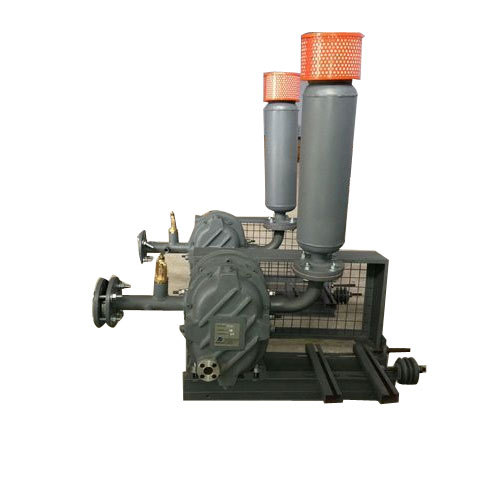
Industrial Roots Air Blower
High-efficiency heavy-duty air blower for industrial use
₹25000.00
Experience unmatched performance with this heavy-duty industrial roots blower, engineered for reliability in demanding environments. Featuring advanced air filtration and integrated silencers, this powerhouse delivers exceptional airflow while minimizing noise and maintenance. Perfectly suited for high-volume applications—including wastewater treatment, pneumatic conveying, and aquaculture—this blower is securely mounted on a durable metal frame for effortless installation and lasting stability. For added versatility, the compact design accommodates a range of installation spaces. Available in standard industrial grey, and offered in multiple sizes to match your specific operational needs. Transform your facility’s efficiency with this robust, ready-to-install solution.
### Understanding Root Blowers: From 1m³ to 7000m³ per Hour When it comes to the efficiency and versatility of industrial blowers, root blowers stand out as a reliable solution for numerous applications. Designed to provide a consistent flow of air or gas, these blowers are extensively used across various industries. Depending on your operational requirements, you can choose from either twin lobe or tri lobe blowers, accommodating flow rates ranging from a modest 1 cubic meter to a robust 7000 cubic meters per hour. #### 1. Twin Lobe Blowers The twin lobe blower, as the name suggests, is equipped with two lobe rotors that are synchronized to rotate within a casing. This design enables the blower to efficiently transfer air while maintaining a constant volume. Key characteristics of twin lobe blowers include: - **Capacity Range**: Typically, twin lobe blowers can handle capacities between 1m³ to several thousand cubic meters per hour, making them adaptable for small to medium-scale applications.
- **Efficiency**: With fewer moving parts compared to other types of blowers, twin lobe blowers are known for their durability and relatively low maintenance needs. They can operate continuously without requiring extensive downtime.
- **Applications**: Ideal for conveying bulk materials, aeration in wastewater treatment, and pneumatic conveying, twin lobe blowers are favored in industries such as food and beverage, pharmaceuticals, and manufacturing.
- **Noise Level**: While they operate efficiently, it’s important to consider noise levels. With proper installation and sound attenuation methods, noise can be managed effectively. #### 2. Tri Lobe Blowers Tri lobe blowers, featuring three lobes in their rotor design, offer enhanced airflow efficiency. This design leads to a more stable and consistent air supply, making tri lobe blowers increasingly popular for high-demand applications. Some noteworthy aspects include: - **Higher Efficiency**: The tri lobe configuration provides a smoother flow of air with reduced turbulence, resulting in improved overall efficiency compared to twin lobe designs.
- **Capacity Range**: Similar to twin lobe blowers, tri lobe blowers can also accommodate capacities from 1m³ to 7000m³ per hour, but they are particularly advantageous for applications that require higher pressures or volumetric flow rates.
- **Versatility**: While they are often employed in industries where bulk material handling is critical, tri lobe blowers excel in more specialized applications, such as vacuum forming, plastic molding, and chemical processing.
- **Reduced Pulsation**: The design of tri lobe blowers minimizes pressure pulsation, which is beneficial for applications that are sensitive to variations in airflow, ensuring a steady and controllable operation. ### Selecting the Right Blower When deciding between a twin lobe and tri lobe blower, consider the following factors: - **Application Requirements**: Evaluate the specific needs of your operation. If your application demands high efficiency and minimal turbulence, a tri lobe blower might be the better choice. Conversely, for simpler applications with moderate flow requirements, a twin lobe blower could suffice.
- **Space Considerations**: Assess the physical space available for installation. Both types of blowers come in various sizes, but their configurations may dictate how much room you need.
- **Maintenance and Operating Costs**: Consider not only the initial investment but also the long-term maintenance costs associated with each type of blower. Typically, twin lobe blowers may have lower maintenance requirements than tri lobe blowers, which can impact the overall cost over time. ### Conclusion Root blowers are integral to many industrial processes, facilitating efficient air movement and enhancing operational productivity. Whether you opt for a twin lobe or a tri lobe blower, understanding your specific requirements will guide you in selecting the appropriate model that delivers optimal performance. From 1m³ to 7000m³ per hour, these blowers are designed to meet diverse needs, helping businesses maintain their competitive edge in today’s demanding market.

